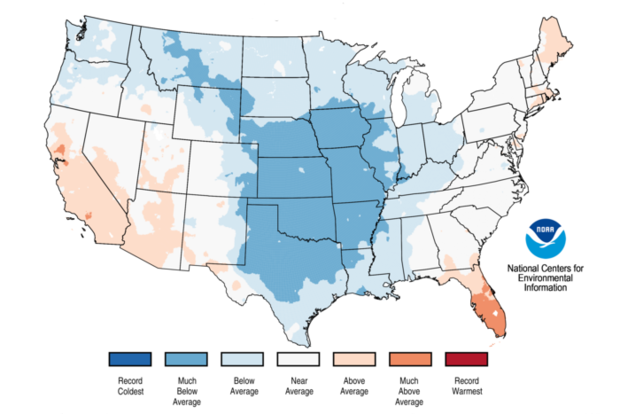Research links extreme cold weather in the United States to Arctic warming
Anomalous cold struck much of the United States in February 2021. Credit: NOAA
Accelerated Arctic warming, known as Arctic amplification, has been evident since the 1990’s as one of the more robust signs of global warming. Currently, certain hypotheses that establish Arctic amplification as a contributor to more severe winter weather, like the record-cold Texas temperatures in February 2021, have ignited intense debates among climate scientists.
A new study in Science, funded by CPO’s Modeling, Analysis, Predictions and Projections (MAPP) program, used machine learning techniques to shed light on this debate. Examining model and satellite data from 1980 to 2021, the research team found that a stretching of the Arctic polar vortex—a strong band of winds in the stratosphere surrounding the North Pole—has increased with Arctic amplification, and is linked with extreme cold across parts of Asia and North America. Climate change is favorable for increasing Arctic polar vortex stretching events, according to the study.
Read more at the link below.
